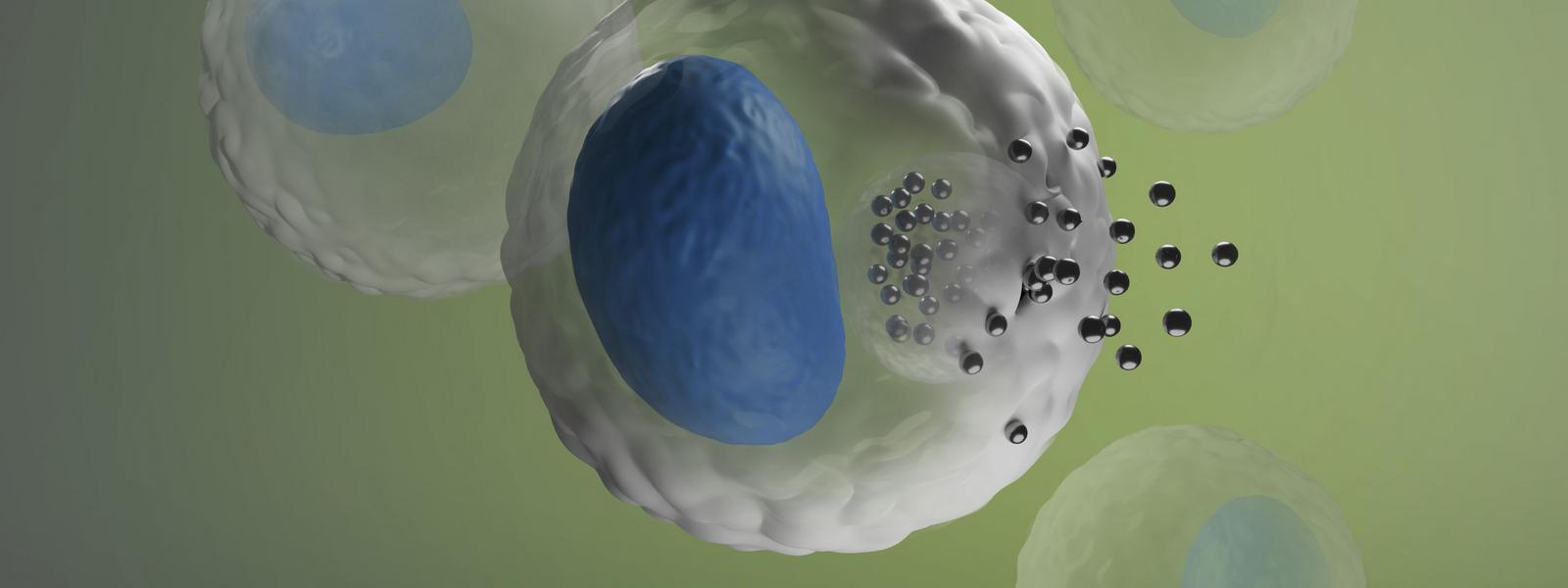
Scientists at Frederick National Laboratory for Cancer Research and the National Cancer Institute have analyzed nearly two decades’ worth of data about biomedical nanotechnology studies, revealing patterns never seen before.
While that may seem exclusively like the domain of laboratory coats and computers, removed from the realm of public concern, its appearance belies reality. Nanotechnology, the use of ultra-microscopic molecules, is still a relatively new tool in biomedicine, and so understanding larger, overarching patterns in nanotechnology research hadn’t been the focus of much study prior to this effort.
The analysis, which appears in Advanced Drug Delivery Reviews, is the result of a partnership between the Bioinformatics and Computational Science Directorate and the Nanotechnology Characterization Laboratory at FNL, as well as the Nanodelivery Systems and Devices Branch at the National Cancer Institute. The team combed through data stored in the Nanotechnology Characterization Laboratory’s past projects pipeline and in caNanoLab, a portal and database for sharing data from nanotechnology studies.
“We have lots of data, and we want to use this opportunity to present all the trends we have accumulated to the community. I think this information could be of great benefit to the nanotech research community,” said Weina Ke, Ph.D., a data scientist in FNL’s Bioinformatics and Computational Science Directorate and co-lead author on the publication reporting the results.
Results drawn from repositories
The data repositories are maintained by FNL and were selected for their broad range. caNanoLab accepts data from FNL and external researchers at any stage of research and development—yet most often sees entries early in that process. Conversely, the Nanotechnology Characterization Laboratory pipeline accepts external projects nearing clinical trials in humans: the later phases of the preclinical process. Together, they encompass several thousand data sets and publications representing a cross-section of biomedical nanotechnology.
Capitalizing on that, the analysis revealed everything from the nanotechnology platforms being studied and tested, to the drugs and active pharmaceutical ingredients being explored, to specific applications in biomedical research. For instance, the majority of nanotechnology platforms being studied in both caNanoLab and Nanotechnology Characterization Laboratory were similar, with some differences among their overall rates. Other comparisons shed light on nanotechnology trends in treating different cancers.
“With all of this data at our fingertips, we thought this was a good opportunity for us to take a deep dive into both NCL and caNanoLab metrics, to gauge whether we’re seeing similarities or not, compare the trends, and share this with the extramural community—because they’re interested, too,” said co-lead author Rachael Crist, Ph.D., a Nanotechnology Characterization Laboratory scientist.
These kinds of data can help scientists parse out what’s happening. The many nanotechnology approaches used over the past two decades have at times made the field seem like researchers would try anything with a decent shot at working. Other times, a handful of methods or platforms seemed to dominate the scene. With the analysis’ results, there’s more clarity.
“Researchers want to know, ‘Am I doing something unique, or is everybody doing this?’” Crist said.
It’s also useful for regulators, Crist added. The Food and Drug Administration will eventually review the nanotechnology products once they reach clinical trials. Seeing high-level trends for products that are in preclinical development, several years ahead of crossing their desks, gives them insight into what to expect and clues them into the field’s overall direction.
‘Climbing higher’
The team decided to perform the analysis in part due to a recent federal mandate that requires researchers receiving federal grants to upload their data to a database sharing portal like caNanoLab. The time seemed right to analyze the past data before the deposits increased.
At FNL, work is also underway to prepare caNanoLab for the data influx. Staff are enhancing its usability and designing new reporting features.
For the analysis itself, Crist good-naturedly called it “grueling” but “fun,” owing to the team having to curate the data by hand. She, Ke, and their colleagues worked through a months-long process. However, they acknowledged that none of it would have been possible without the researchers who uploaded data into caNanoLab and shared their nanotechnologies with the Nanotechnology Characterization Laboratory.
“It’s kind of like stepping on previous researchers’ shoulders and climbing higher,” Ke said.
Crist agreed: “Researchers have always used publication as a means to get to the next level—sharing what you’ve learned and putting everything out there enables researchers to learn, grow, and advance the next level of treatments and diagnostic agents.”
Media Inquiries
Mary Ellen Hackett
Manager, Communications Office
301-401-8670
